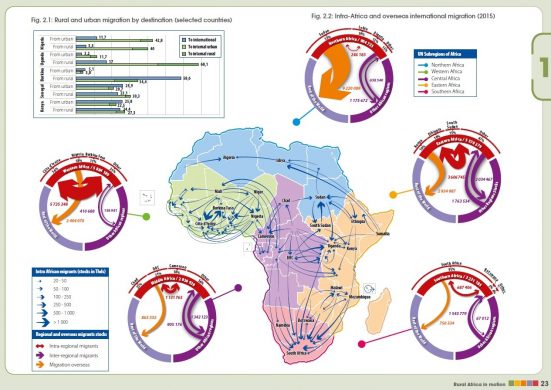2 November, Rome (FAO): A first atlas to offer a better understanding of complex rural migration patterns in sub-Saharan Africa has been published today.
The atlas – Rural Africa in motion. Dynamics and drivers of migration south of the Sahara – also highlights the important role rural areas will continue to play in shaping the continent’s migration for decades to come.
“Population growth translates into a massive expansion of the labour force. Some 380 million new working age people are expected to enter the job market by 2030. Of those about 220 million are likely to be in rural areas. The challenge is to generate enough employment to absorb this booming labour force. This is why agriculture and rural development must be an integral part of any response to large migratory movements to harness the potential of migration for development,” said Kostas Stamoulis, FAO Assistant Director-General, Economic and Social Development Department.
Through a series of maps and in depth case studies, the 20 authors of the atlas, representing different research institutions, think tanks and international organizations from and outside Africa, explore the complexity of the interrelated causes that drive people in Africa to leave their homes. They shed light on regional migration dynamics and perspectives, and foster understanding of rural migration.
The atlas is the result of a partnership between the French Agricultural Research Centre for International Development (CIRAD) and the Food and Agriculture Organization of United Nations (FAO), with technical support from the Centre for the Study of Governance Innovation (GovInn) in South Africa.
“This atlas is an innovative contribution which will support the policy debate not only between governments and the international community, but also between and with local stakeholders,” said Jean-Luc Khalfaoui, CIRAD’s Director General for Research and Strategy.
North versus sub-Saharan Africa: different migration flows
Læs hele artiklen og find mere info om den afrikanske migration hos FAO














